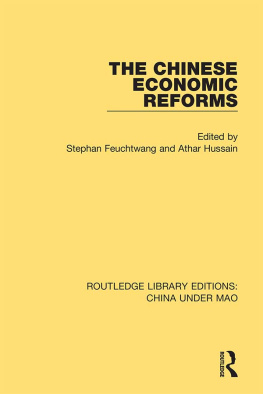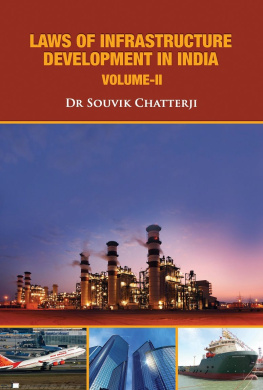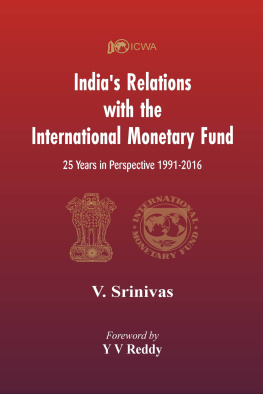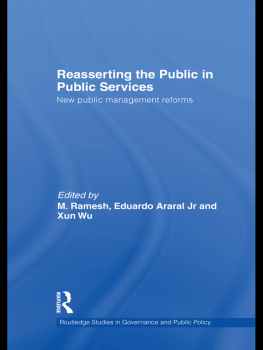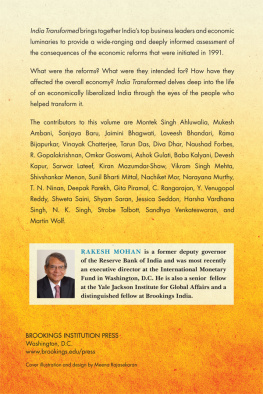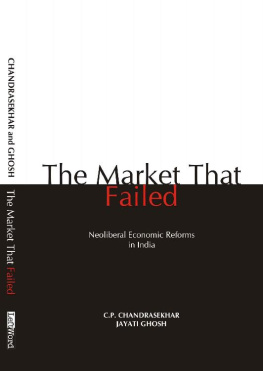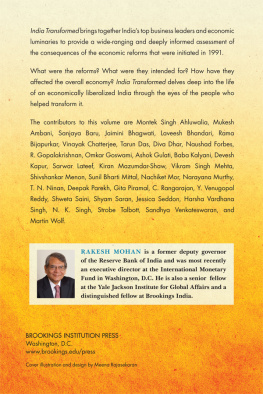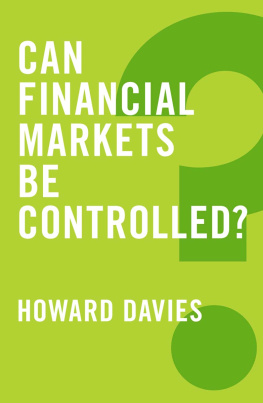THE
FUTURE
OF
INDIAN
ECONOMY

Published by
Rupa Publications India Pvt. Ltd 2017
7/16, Ansari Road, Daryaganj
New Delhi 110002
Anthology and Introduction Copyright Yashwant Sinha and Vinay K. Srivastava 2017
Copyright for individual pieces vests with the respective authors.
The views and opinions expressed in this book are the authors own and the facts are as reported by them which have been verified to the extent possible, and the publishers are not in any way liable for the same.
All rights reserved.
No part of this publication may be reproduced, transmitted, or stored in a retrieval system, in any form or by any means, electronic, mechanical, photocopying, recording or otherwise, without the prior permission of the publisher.
ISBN: 978-81-291-4806-3
First impression 2017
10 9 8 7 6 5 4 3 2 1
This book is sold subject to the condition that it shall not, by way of trade or otherwise, be lent, resold, hired out, or otherwise circulated, without the publishers prior consent, in any form of binding or cover other than that in which it is published.
CONTENTS
Yashwant Sinha and Vinay K. Srivastava
Yashwant Sinha
C. Rangarajan
Sanjaya Baru
Pradeep S. Mehta and Abhishek Kumar
Shekhar Dutt
Mani Shankar Aiyar
N.K. Singh
D.K. Srivastava
Subhash Chandra Pandey
U.K. Sinha
B.P. Mathur
Yoginder K. Alagh
S.K. Srivastava
Gopal Krishna Agarwal and Yuthika Agarwal
Jagdish Prakash and Vinay K. Srivastava
Rajat Kathuria
B.B.L. Madhukar and Kuldeep Indeevar
Ashish Kumar and Rahul Mazumdar
FOREWORD
For the economy of independent India, 1991 was a tumultuous year in which it experienced an acute macroeconomic crisis. It was also a momentous year that witnessed radical departures from the past. In recent times, it has been the focus of much discussion not only in the media, but also among scholars in economics and politics. This is no surprise. It is twenty-five years since July 1991, when economic liberalization began life in India. For some, those who lived through the times as adults, it is etched in memories as a watershed. For most, particularly those who were young, or at school, or not yet born, it is essentially a folklore.
In retrospect, there are three propositions about that conjuncture which deserve recognition and emphasis. First, the story of 1991 began much earlier although it surfaced in late 1990. The origins of the crisis lie in the cavalier macro-management of the economy during the second half of the 1980s, when both the government and the economy lived beyond their means. Second, there were many actors, in leading or supporting roles, in this drama that unfolded through three successive governments in a span of two years, from late 1989 to late 1991, marked by economic crises and political uncertainties. It is indeed misleading to focus on the events of July 1991 without reference to developments in the preceding twelve months. Third, it was the largely ignored political process, driven by economic compulsions of the time, which made liberalization possible. Two short-lived governments that inherited an economic crisis made tough decisions instead of postponing the day of reckoning. During the political interregnum, when there was no elected government that could make policy decisions, the governmental system and its institutions did everything possible to avert default. A minority government that had not yet won a vote of confidence in Parliament acted promptly and decisively. This does highlight the resilience of the political process. Democracy was stable even if governments were not.
In my view, any government that came to power in mid-1991 would have done almost the same. The blueprints existed. There was little choice. Even so, the outcome was possible only because there was an elected government after months of political uncertainty, and a Prime Minister, P.V. Narasimha Rao, who was most decisive in a crisis situation and quietly persuasive in political management. There were dissenting voices, rather than consensus, both in the Congress party and in the Opposition. But there was a consciousness among politicians across parties, which did not necessarily mean an understanding, about the crisis in the economy. The political system was somewhat tired of conflict and no one was willing to bring down a minority government to force yet another election on people. There were two supportive factors. For one, emerging concerns about efficiency and productivity had led to rethinking about policies, through the late 1980s, so that the manifesto of every political party for the 1991 elections, across the ideological spectrum, had talked about the need to restructure the economy. For another, the collapse of communism and the break up of the erstwhile USSR had replaced competing ideologies with a dominant one in which markets and capitalism were seen as the way forward.
It is clear enough that both macroeconomic adjustment and structural reforms were driven by economic problems confronting the government in mid-1991. The immediate short-term compulsions were managing the critical balance of payments situation, manifest in the external debt crisis, and controlling inflation to restrain inflationary expectations. The medium-term needs were finding a sustainable solution to the fiscal crisis, through fiscal adjustment, and returning the economy to a path of sustained growth, through structural reforms that would increase the productivity of investment and make the economy more efficient in its use of resources. The economic priorities of the people (reducing poverty, creating employment, reviving agriculture, building infrastructure) and long-run national development objectives (education, health, technological capabilities) were not part of either the conception or the design of economic liberalization at the time.
For an economy in crisis, a return to prudent macro-management of the economy was both necessary and desirable. The fiscal adjustment was sorely needed. The exchange rate adjustment was necessary to stem destabilizing expectations, dampen imports and stimulate exports. Even the sale and pledge of gold was an important symbolic gesture that helped restore confidence in international capital markets. There was no default on international payments obligations. The economy in crisis was stabilized.
Some components of structural reforms, but not all, were both necessary and desirable. However, there were significant limitations which have been validated by subsequent experience. First, it was not recognized that, in designing the speed and sequence of reforms, deregulation and openness must be compatible with initial conditions and consistent with each other. Second, reforms dispensed with over-regulation of markets but did nothing to address the problem of under governance of markets by creating institutional structures and legal frameworks for governing the markets. Third, the presumption that policy regimes that are necessary are also sufficient was wrong. Policy regimes can allow things to happen but cannot cause things to happen. And there is nothing automatic about competition.
Even so, it is important to recognize that India has met with more success than most developing countries and transition economies following economic liberalization. This success is, to a significant extent, attributable to institutional capacities which existed at the time the reforms were introduced. And the essential foundations were provided by the preceding four decades of economic development in India. The entrepreneurial abilities were created. A system of higher education was developed. The social institutions and legal frameworks necessary for a market economy were in place. In this milieu, it was possible to create new institutional capacities with relative ease. Given the importance of initial conditions, it must also be recognized that economic reforms in India yielded benefits in significant part because of the essential foundations that were laid in the preceding four decades. The politics of democracy was the other critical factor that sustained the process in India.
Next page


